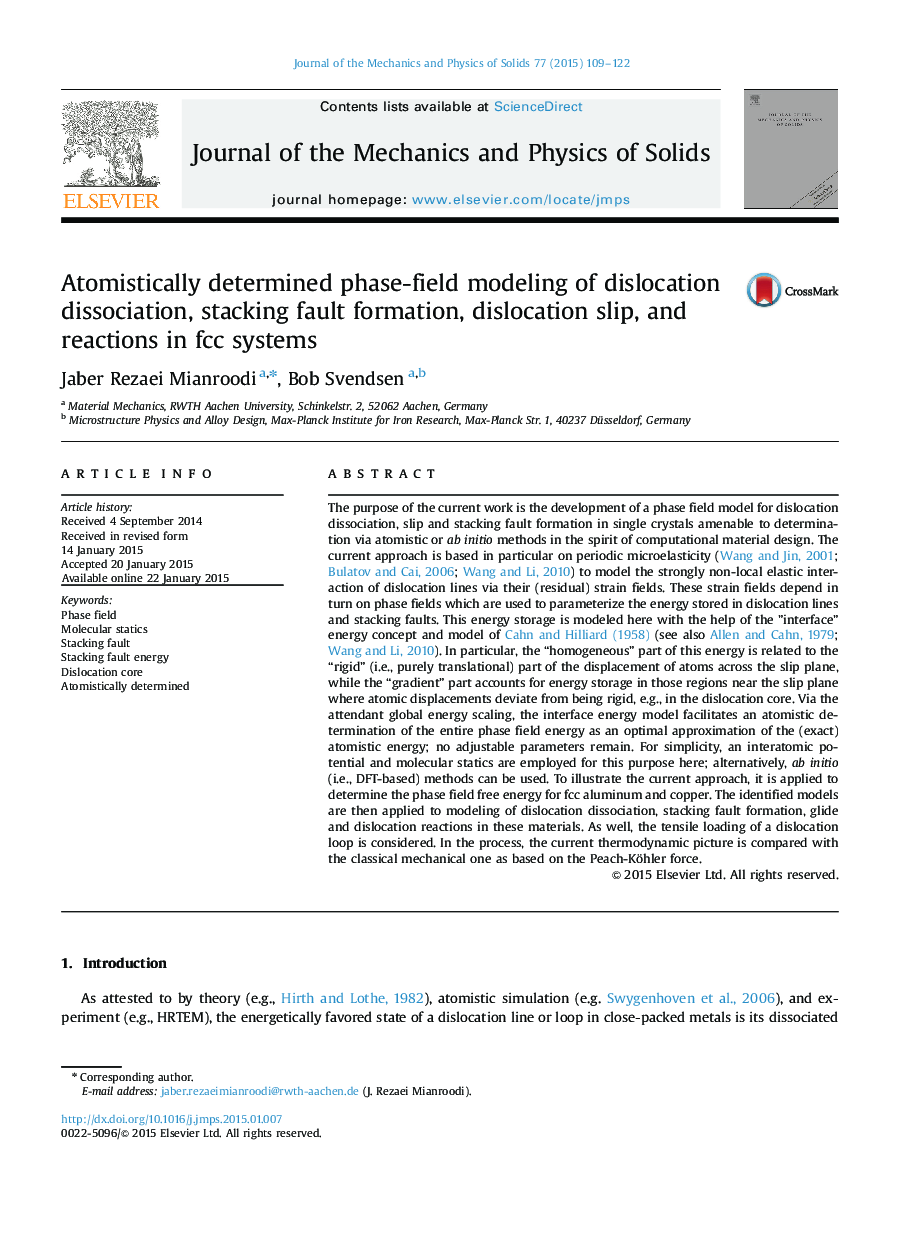| کد مقاله | کد نشریه | سال انتشار | مقاله انگلیسی | نسخه تمام متن |
|---|---|---|---|---|
| 796551 | 1467066 | 2015 | 14 صفحه PDF | دانلود رایگان |

The purpose of the current work is the development of a phase field model for dislocation dissociation, slip and stacking fault formation in single crystals amenable to determination via atomistic or ab initio methods in the spirit of computational material design. The current approach is based in particular on periodic microelasticity ( Wang and Jin, 2001, Bulatov and Cai, 2006 and Wang and Li, 2010) to model the strongly non-local elastic interaction of dislocation lines via their (residual) strain fields. These strain fields depend in turn on phase fields which are used to parameterize the energy stored in dislocation lines and stacking faults. This energy storage is modeled here with the help of the ”interface” energy concept and model of Cahn and Hilliard (1958) (see also Allen and Cahn, 1979 and Wang and Li, 2010). In particular, the “homogeneous” part of this energy is related to the “rigid” (i.e., purely translational) part of the displacement of atoms across the slip plane, while the “gradient” part accounts for energy storage in those regions near the slip plane where atomic displacements deviate from being rigid, e.g., in the dislocation core. Via the attendant global energy scaling, the interface energy model facilitates an atomistic determination of the entire phase field energy as an optimal approximation of the (exact) atomistic energy; no adjustable parameters remain. For simplicity, an interatomic potential and molecular statics are employed for this purpose here; alternatively, ab initio (i.e., DFT-based) methods can be used. To illustrate the current approach, it is applied to determine the phase field free energy for fcc aluminum and copper. The identified models are then applied to modeling of dislocation dissociation, stacking fault formation, glide and dislocation reactions in these materials. As well, the tensile loading of a dislocation loop is considered. In the process, the current thermodynamic picture is compared with the classical mechanical one as based on the Peach-Köhler force.
Journal: Journal of the Mechanics and Physics of Solids - Volume 77, April 2015, Pages 109–122